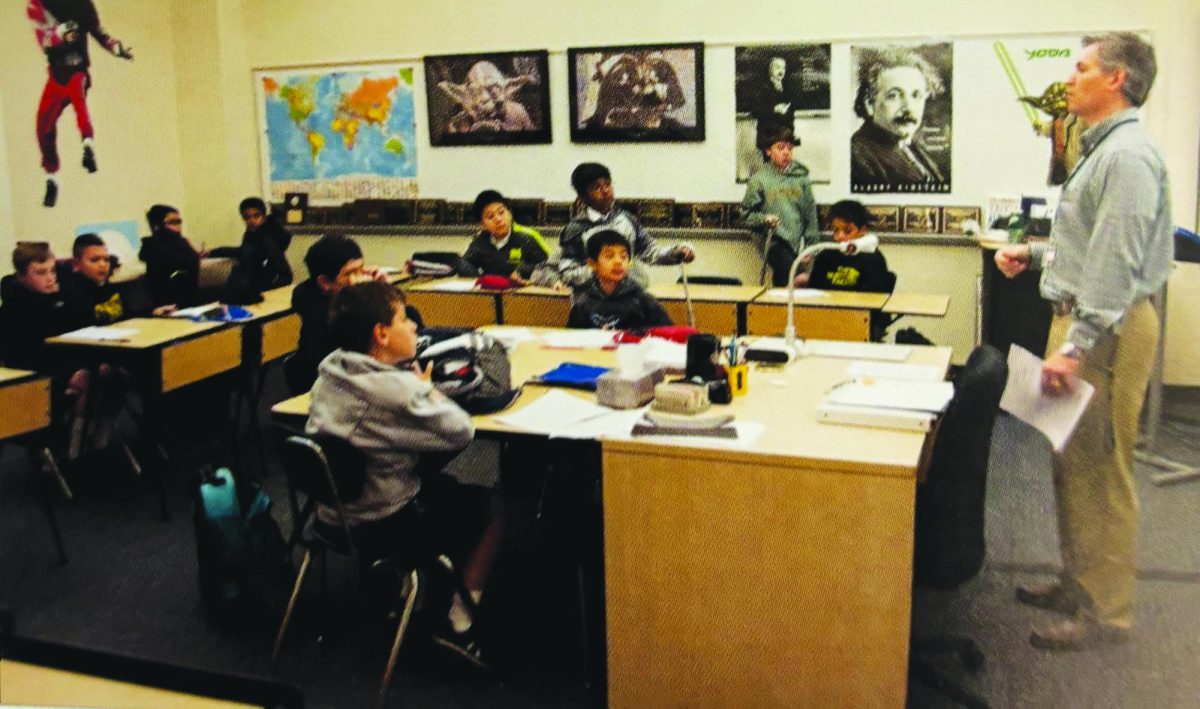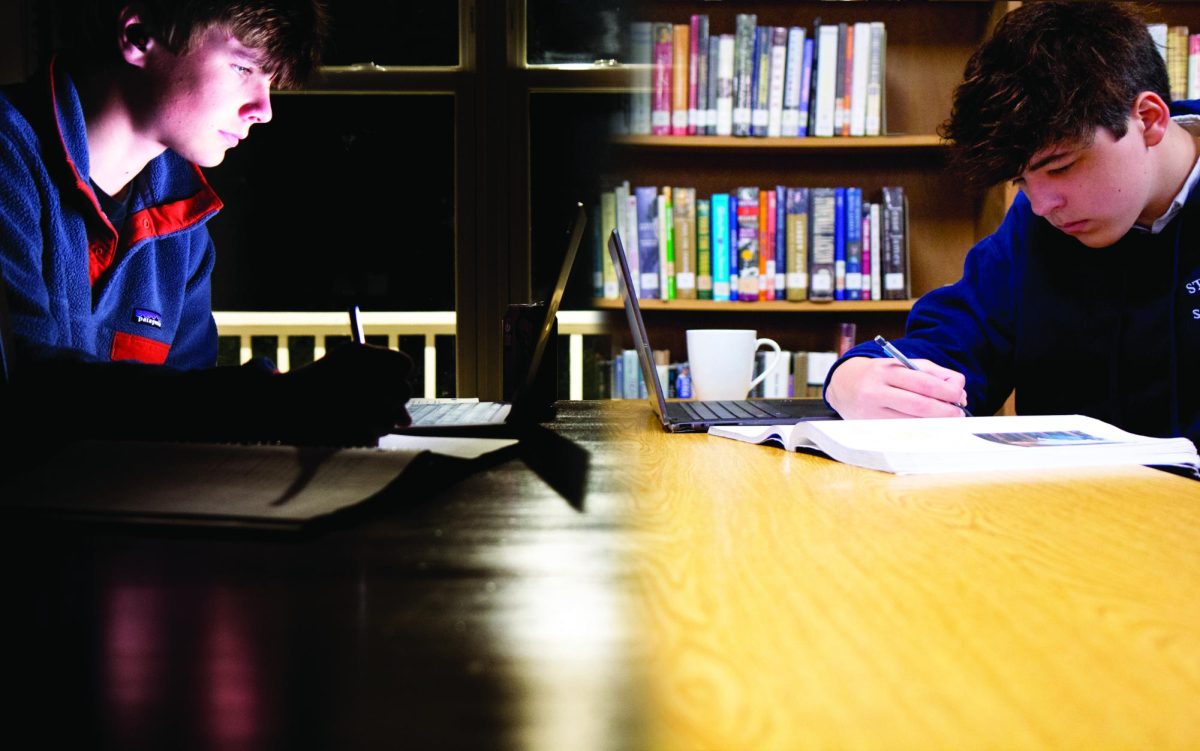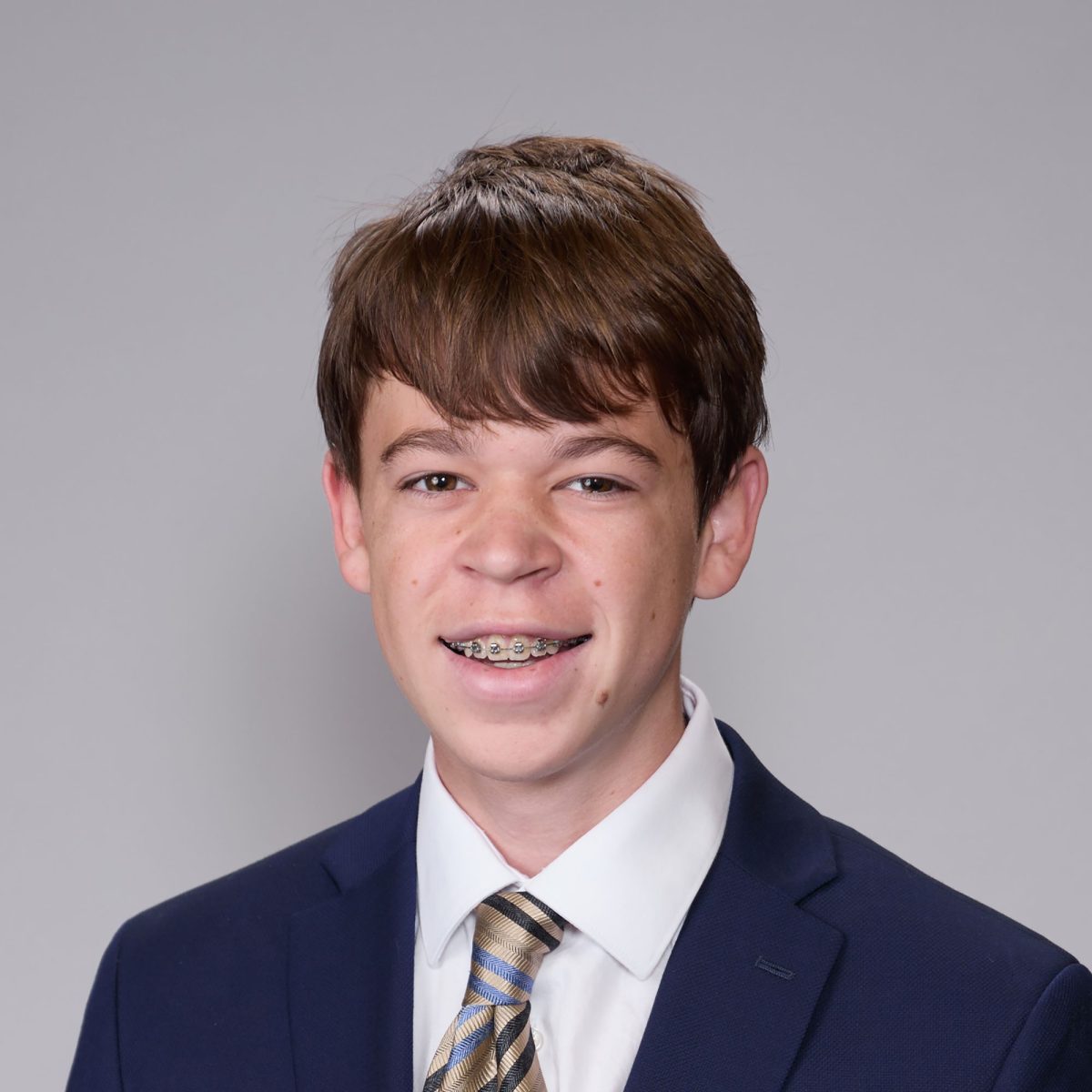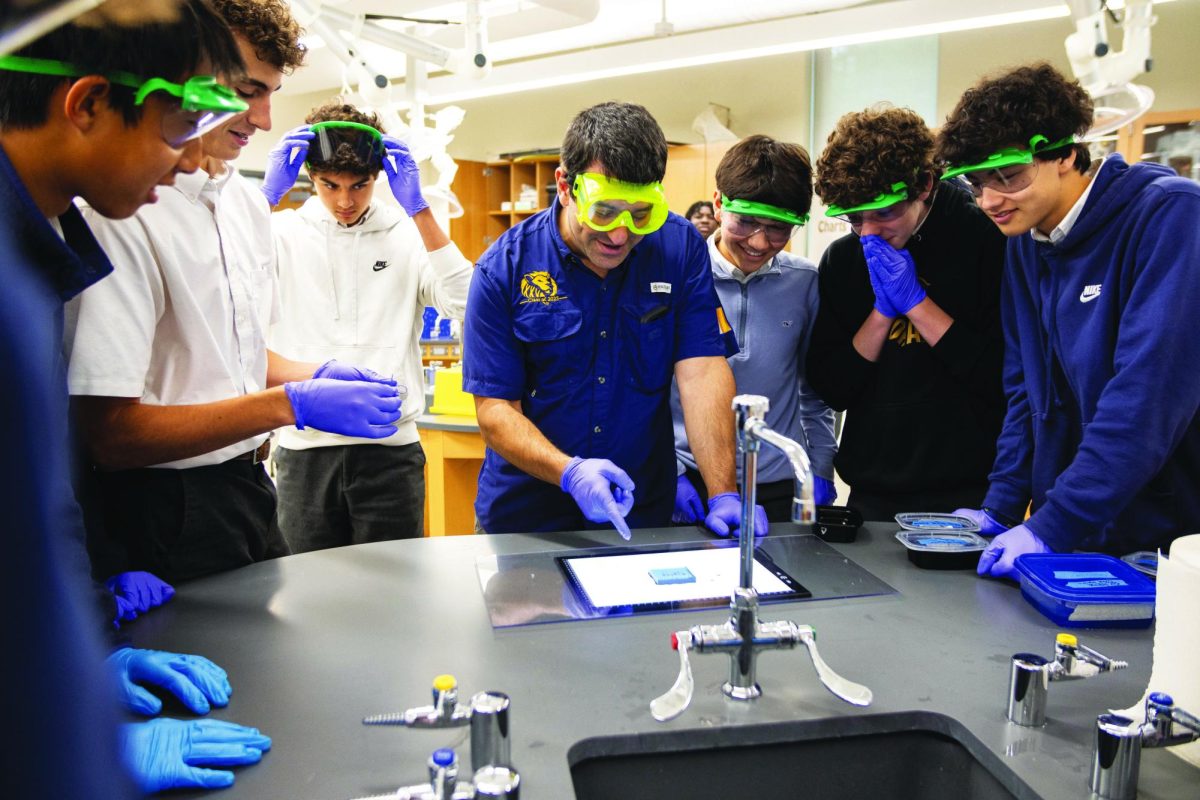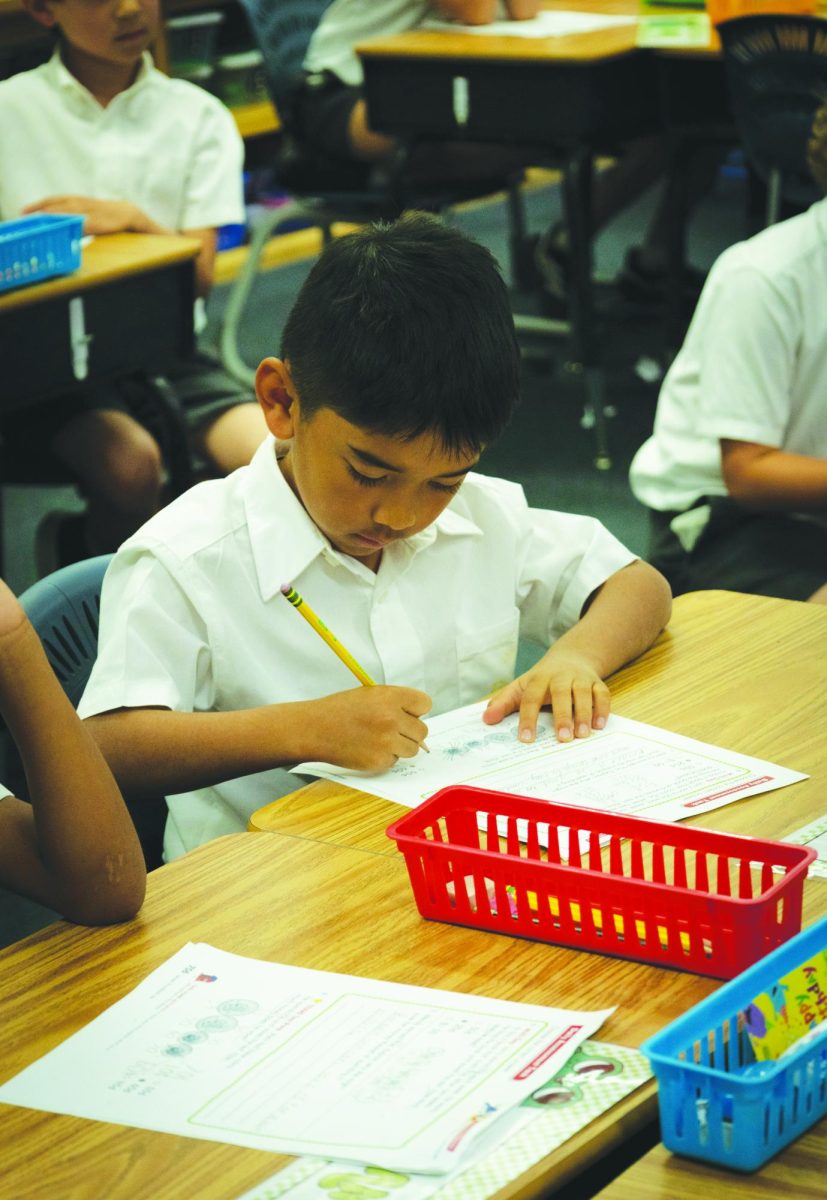He only had enough time for a quick breakfast before he was off to school.
A highly regimented day, he had hours of classes, sports and clubs, with little free time in between.
Before, teachers wouldn’t take any excuses. There was no ‘my last class was in Nearburg,’ and no ‘I had a basketball tournament this weekend.’
Class started and ended by the bell. Chalk scratched against a green board while teachers droned on for what felt like hours on end.
Lunch was only 25 minutes long. No seconds. Definitely no salad bars or panini presses. Just a couple conversations, then back to studying.
Things have changed since science instructor Dan Northcut ‘81 first joined in seventh grade.
“It was more serious,” Northcut said. “When I got here, after my first day, I was thinking, ‘this is a job.’”
Following his graduation, Northcut joined the faculty. As a teacher, Northcut began to notice small changes from his time as a student, starting with the little things: students could get extensions.
“In order to get an extension on a paper when I was a student, you’d have to have a death in the family,” Northcut said. “Our job was to be prepared for all these things.”
In the 80s, mental health awareness, extensions and other excuses weren’t used much.
“Things have gotten a lot more touchy-feely, but not in a demeaning way,” Northcut said. “The world was not interested in relieving your stress. During the school day, there wasn’t a lot of free time, and we certainly didn’t have games to take out and play on the quad.”
As culture and technology evolved, so has the classroom. When Northcut was in school, only dusty chalkboards hung from the walls of each classroom.
“If you wanted to show pictures, you had to have slide carousels and show slides,” Northcut said. “We had 16 millimeter projectors that had big reels of film that we put on.”
Along with classroom technology, the campus has gone through major renovations, with buildings knocked down often and new ones rising in their place. Standing for more than 60 years, Wirt Davis Hall was once the most recognizable and important academic building on campus, housing everything from the student commons to massive lecture halls.
“I think there are only three buildings still here that have been here since I was a student,” Northcut said. “There was the library, Decherd Hall and the gym.”
Throughout the years, curriculums have also changed drastically. Classes like French and German were slowly replaced with the likes of Chinese and senior English electives. Old lecture-style classes have also been switched out, in favor of the more interactive socratic seminar structure.
“In my experience, classes were just lectures and you just had to learn how to sit through it,” Admission Officer Korey Mack ’00 said. “Now, the advent of technology may have contributed to those attention spans being a little shorter, so as a result, teachers have to be more creative in framing up a greater variety of distinct learning experiences.”
Groups like Telos have led to dramatic curriculum changes over the years. Ten years ago, those groups didn’t exist. But now, those same groups have shaped the school and its students. For example, in its more-than-a-decade-long tenure, Telos has helped to shape the school’s English curriculum, switching out classes like World Literature to English, where students focus on character education and becoming a man.
With these changes, chemistry instructor Kenneth Owens ‘89 believes that the social culture has dramatically changed since he was a student, with more friendships and interactions between students across different grades.
“Senior buddies did not exist,” Owens said. “The only time I dealt with the lower schoolers was picking them up, putting them on my shoulders at the Christmas party, walking them up, putting them down and letting them go. So that whole bit of mentorship is new.”
There also used to be much more academic interaction with Hockaday, with students going to each other’s campuses for classes during the day.
“When I was a student, there were only a couple of students who did [the program], but it became more encouraged over the time I was gone,” Owens said. “When I came back as a teacher, there were as many as 70 students a day going back and forth for classes.”
Most of these changes may be due to one factor: technology. Thirty years ago, using a computer required a visit to the computer lab, but now technology can simply be carried around.
Classes now can be virtual, assignments can now be distributed online and more advanced laboratory equipment can now teach students much more.
Although more efficient in many ways, these advancements have come with many downsides as well.
“There are so many sites that exploit our time and attention, social media being a great example,” Mack said. “The fact that there are these competing interests for your time and attention create another layer of challenge in this era in this age that wasn’t there. Before, we weren’t bombarded with so many distractions because we didn’t carry them around in our pocket all the time.”
With more students on their phones and computers, interpersonal communication may have become more distant. However, Mack believes technology has helped students branch out from the classroom.
“I think St. Mark’s does a really good job of making sure that our boys recognize the importance of making positive affirmative efforts to get outside of our community,” Mack said. “I think it’s important for us as a school community to recognize that we have to get outside of our own community to really be Marksman.”
Like Mack, Owens feels that the development of modern devices such as the iPhone come with positives and negatives of student connectedness.
“You get to have communities off campus that you can access all the time,” Owens said, “but that comes at the cost of interacting with people who are immediately around you.”
Nevertheless, Owens believes that the distractions of modern technology should not be used as an excuse, as students will always find a way to distract themselves whether the technology is new or old.
“We had those same distractions, so they’re not really new,” Owens said. “It’s a new twist on an old and perennial problem, and learning how to navigate that is as important for students today as it was for us.”
As earning high marks in classes have become ingrained in school culture, Marksmen are more inclined to strive for a certain grade than learning the material.
Nowadays, students can see their grades online — a large contrast to the system just ten years ago.
“When I was a student, I had no idea what my grade was until the mid-semester when comments were mailed home in a letter, not published online,” English instructor Cameron Hillier ‘13 said. “As a teacher, I see it in my students now where what we’ve given rise to is grade grubbing, for lack of a better word, because students have a live feed of their grades.”
This aim for perfection can lead to unhealthy competition both between students. Additionally, a larger focus is put on grades rather than learning the material.
“Think about the additional pressure you’re putting on yourself as a student,” Hillier said. “Just focus on doing well on the next thing. The advice you get in a game from your coach would probably be, ‘Don’t worry about that one, just focus on doing well on the next play.’ There’s something to be said with that — it’s simpler, but maybe better.”
Outside of the classroom, the culture of competition fades, and in contrast to before, there have been more clubs and more free time for students outside the classroom, such as the hour time in between sports and more studyhalls. Marksmen are free to pursue their unique interests and support classmates in any endeavor.
“The pervasive culture when I was a student was to be good at something,” Hillier said. “It didn’t really matter that much about what you did, but (you had to) be good at it.”
The environments of social spaces like Centennial Hall lounge and the senior lounge have been shaped by a modern-day dependence on technology.
In any given free period, a vast majority of students in Centennial Hall lounge can be seen staring into their phones, and the senior lounge echoes the sound of a video game console.
“In the senior lounge, we had a ping pong table and a boombox CD player,” Hillier said. “We just sat around, played ping pong and listened to music on CDs, and that was fun.”
Although most things have changed — from buildings to technology, culture to curriculums — the Marksman community has stayed the same. No matter how the classroom changes, from chalk boards to touch-sensitive projectors, each student is still bonded to their classmates by a brotherhood and unwavering loyalty.

